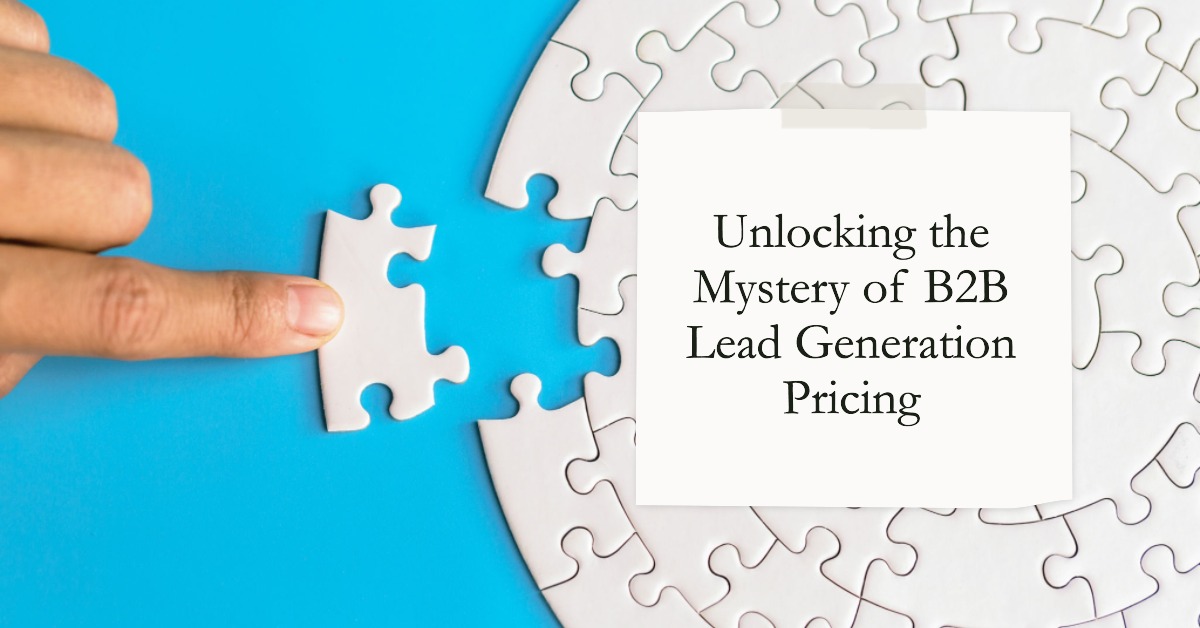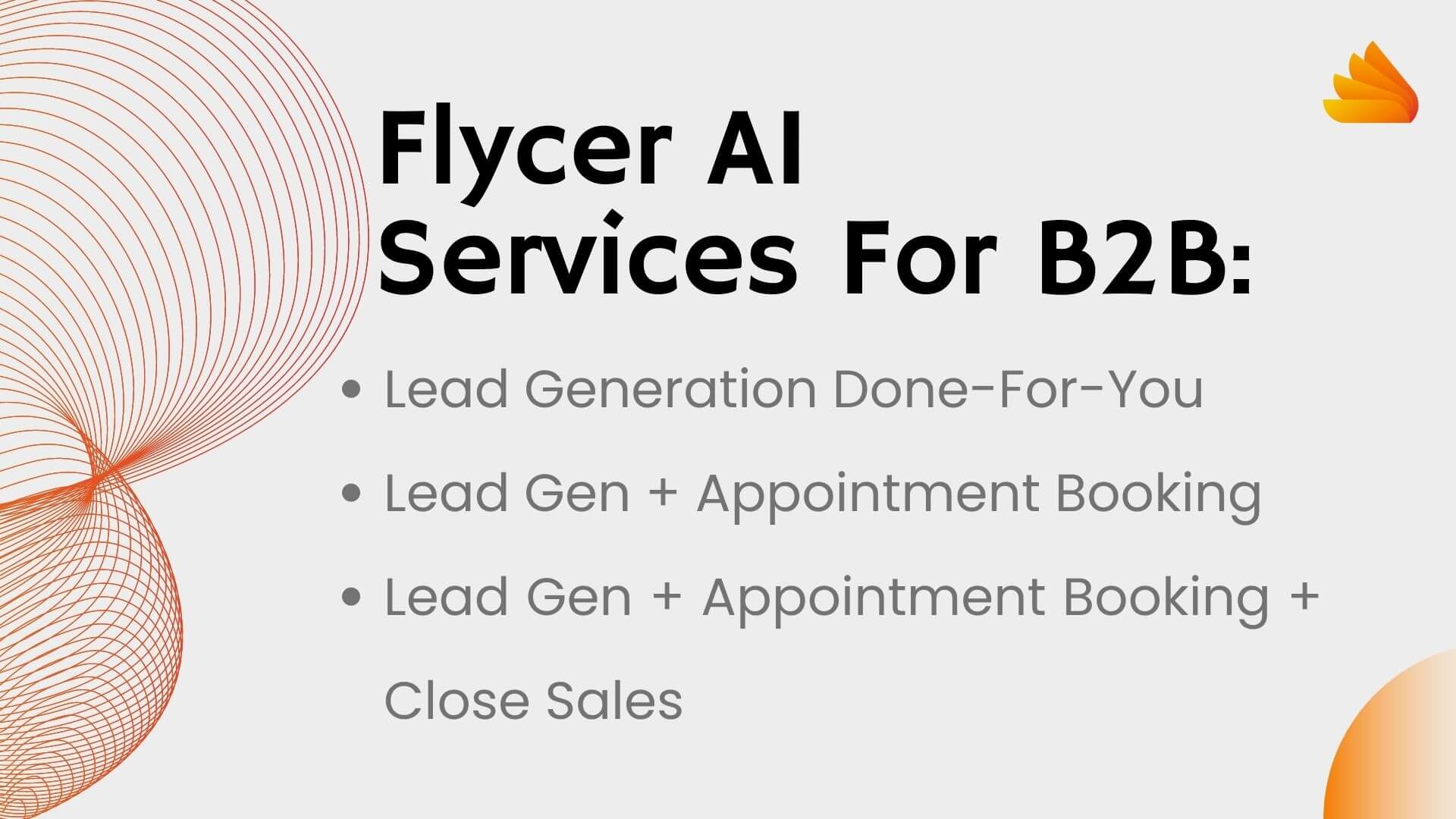Understanding Lead Gen Pricing: A Comprehensive Guide
Lead generation can be a complex and often confusing topic for many b2b marketers. As a critical aspect of any b2b lead generation strategy, it is essential to have a comprehensive understanding of the various factors that influence pricing and how different lead generation services price their offerings. In this guide, we will explore everything you need to know about lead generation pricing.
One of the most significant factors influencing lead generation costs is the type of leads being generated. There are two primary types of leads: marketing qualified leads (MQLs) and sales qualified leads (SQLs).
MQLs are potential customers who have shown interest in your brand through various marketing campaigns but may not be ready to make a purchase yet. On the other hand, SQLs are those that have been vetted by sales teams and have a higher likelihood of converting into paying customers.
The cost per lead for SQLs is generally higher than MQLs due to the increased level of qualification needed. Another factor that affects lead generation pricing is the chosen lead gen channel or channels.
B2B marketers can use various channels to generate leads, such as email marketing, content marketing, search engine optimization (SEO), social media marketing, account-based marketing (ABM), and more. Different channels come with varying costs per click or impression, influencing overall costs.
Additionally, the industry in which your business operates can also play a role in determining how much you will pay for b2b leads. Industries with high competition like finance or healthcare tend to have higher costs because they require more investment in advertising than other sectors.
One must consider whether they want to take an inbound or outbound approach when generating leads as this affects overall price as well. Inbound strategies focus on creating content that attracts potential customers naturally while outbound techniques involve reaching out directly through phone or email campaigns.
Understanding all the different factors that influence lead generation pricing is essential if you want to generate high-quality leads efficiently. By carefully evaluating your business needs and the costs associated with each lead generation channel, you can choose the right strategy that aligns with your budget and goals.
Flycer AI: Simplifying B2B Lead Generation Pricing
When it comes to generate B2B leads, Flycer AI has revolutionized the process by offering straightforward, easy-to-understand pricing models. With Flycer AI, getting leads and booked appointments is as simple as choosing a plan.
Flycer AI offers two primary services: “Lead Generation Done for You” and “B2B Appointments Setting with Hot Leads“. Both services are designed to take the hassle out of lead generation and appointment setting, allowing businesses to focus on what they do best.
Lead Generation Done for You
Flycer AI’s “Lead Generation Done for You” service is designed to generate hot leads and deliver them straight to your inbox. The process is powered by advanced AI technology, which refines your campaign strategy based on the most effective messaging and targeting. It’s important to note that results may not be immediate. Like any outbound marketing strategy, it takes some time to get the campaign working effectively. However, results tend to compound over time. After the initial 30-45 days, the results are expected to increase as the AI passes its warming-up phase.
B2B Appointments Setting with Hot Leads
Flycer AI’s “B2B Appointments Setting with Hot Leads” service takes things a step further. Not only does it generate hot leads, but it also sets up appointments with these leads. This service is entirely done for you. All you have to do is show up for the meeting. Similar to the lead generation service, results are expected to increase after the initial 30-45 days as the AI completes its warming-up phase and the campaign strategy is refined.
In conclusion, Flycer AI’s pricing models for lead generation and appointment setting services are designed to be straightforward and easy to understand. By choosing a plan that fits your needs, you can say goodbye to the hassle of lead generation and focus on growing your business.
Factors Influencing Lead Gen Costs
B2B businesses are always looking for ways to generate leads and increase their sales.
However, lead generation is not always cheap, as there are many factors that can influence the cost of this process. In this section, we will discuss some of the most important lead generation strategies b2b that influence costs.
One of the biggest factors is the type of leads that a company is trying to generate. For example, if a business wants highly qualified leads who are ready to make a purchase, they will need to invest more in their lead generation campaign than if they were targeting less qualified leads who may take longer to convert into paying customers.
The more specific and targeted the desired audience is, the higher the cost of acquiring those leads. Another factor that can impact lead generation costs is the marketing channel used by a business.
Different marketing channels have different costs associated with them. For instance, using search engine optimization (SEO) or PPC advertising on Google can be expensive while social media campaigns and email marketing campaigns could be cheaper alternatives.
Moreover, how many b2b sales your company makes from your qualified leads should also be considered when determining how much money you’re willing to spend on lead generation services. Having an effective sales team in place increases customer conversion rates significantly which reduces overall cost per acquisition in turn increasing ROI significantly.
Competition within an industry has a significant impact on lead generation costs as well. If there are many businesses competing for similar potential customers or clients within an industry then it becomes much harder and costly for businesses to differentiate themselves from their competitors and attract potential customers’ attention.
There are several key factors that influence the cost of leads including: types of leads needed, marketing channels used by businesses, effectiveness of sales teams converting qualified leads into paying customers and competition within an industry. Understanding these factors is essential for businesses looking to invest in lead generation services, as it allows them to make informed decisions about the best and most cost-effective strategies for generating leads and maximizing their ROI.

How Top Lead Generation Companies Price Their Services
One of the most challenging aspects of lead generation is determining how to price your services. This is particularly true for lead generation companies, which must consider a variety of factors when deciding how much to charge clients for their services. In this section, we’ll explore some common approaches that top lead generation companies use when pricing their services.
One approach that many successful lead generation companies take is to offer a flat fee for their services. This means that clients pay a set amount for a certain number of quality leads or leads within a specific industry.
By offering a flat fee, these companies are able to provide predictable pricing for clients and ensure they are receiving high-quality leads in return. Another common approach used by top lead generation companies is performance-based pricing.
Under this model, the company only charges for leads that meet certain qualifications, such as being from a potential customer within the client’s target market or having explicit interest in the client’s product or service. This puts the onus on the lead generation company to deliver qualified leads and incentivizes them to focus on quality rather than quantity.
Some lead generation companies may also use tiered pricing models based on different levels of service or number of leads generated per month. For example, a basic package may include 50 leads per month at one price point while an advanced package might include 200+ high-quality sales leads at another price point.
Some top-performing lead generation companies charge based on project scope and complexity. For example, if they are tasked with developing and executing an entire lead generation strategy that includes everything from Google Ads campaigns to social media outreach and direct mail marketing efforts – then more time and resources would be required which will increase overall costs.
Ultimately there are many ways in which lead gen can be priced depending upon what makes sense applicable considering various factors such as types of businesses served (startups vs established enterprises), performance guarantees, industry-specific demands and more. Regardless of the approach taken, pricing lead generation services is a careful balancing act between providing competitive rates for quality leads while also ensuring the company remains profitable and sustainable over time.
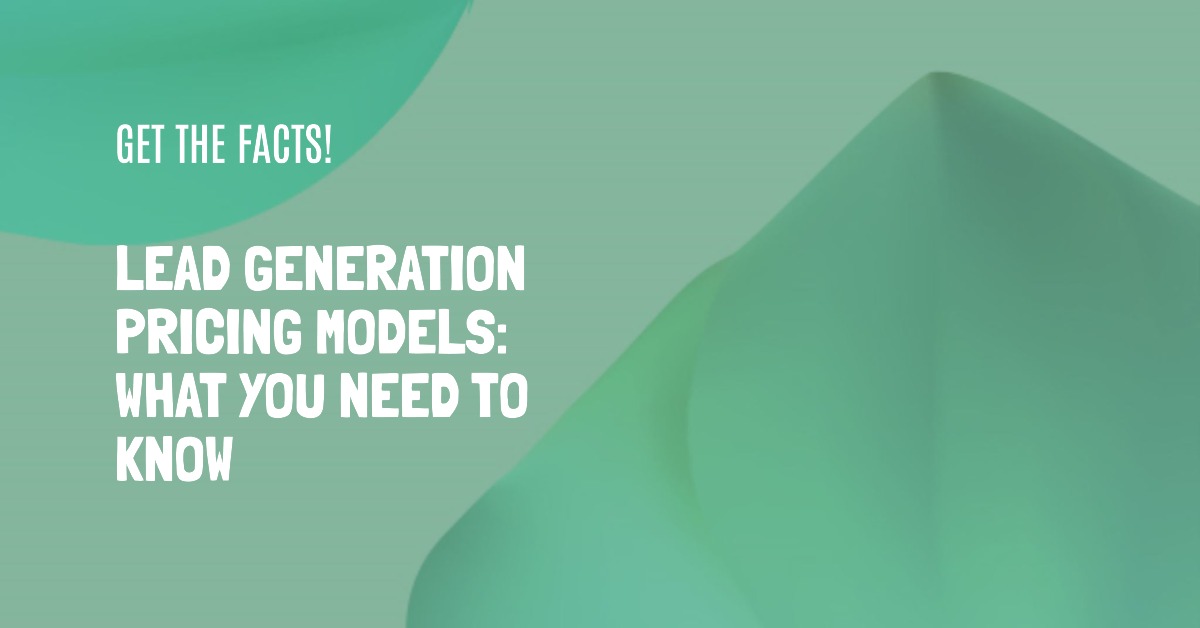
Lead Generation Pricing Models: What You Need to Know
When it comes to lead generation pricing models, there are several options to choose from. Each model has its pros and cons, so it’s important to understand them before deciding on the best one for your b2b business.
Here are some of the most common lead generation pricing models: 1. Cost per Lead (CPL): This is a common pricing model used by many lead generation companies.
In this model, you pay a set fee for each sales lead generated by the company. The advantage of this model is that you only pay for the leads that are generated, meaning you’re not wasting money on any unqualified leads.
2. Pay per Lead (PPL): Similar to CPL, pay per lead also charges based on leads generated but with a different payment structure which gives greater flexibility for businesses who want more control over their budget. 3. Hourly Rate: Some lead generation companies charge an hourly rate for their services.
This can be beneficial if your b2b business only requires occasional or sporadic lead generation efforts instead of an ongoing campaign. 4. Subscription-Based: Another option is subscription-based pricing where a monthly fee is charged in exchange for regular and consistent delivery of leads.
It’s important to note that each model has its advantages and disadvantages depending on your specific needs and budget constraints. Some models might be more suitable than others depending on the size of your business or industry niche.
One way to determine which model suits your b2b business best is by conducting market research and then collaborating with potential vendors before making any final decisions. Ultimately, whatever pricing model you choose should offer value-for-money leads that align with your demand and drive sales growth in line with your overall marketing strategy objectives.
Having a good understanding of various pricing models will help you identify what works best for your lead generation needs as well as obtaining higher-quality leads. There is no one-size-fits-all approach, so it’s important to analyze your specific requirements to determine the ideal pricing model that will give you the best results for your business.
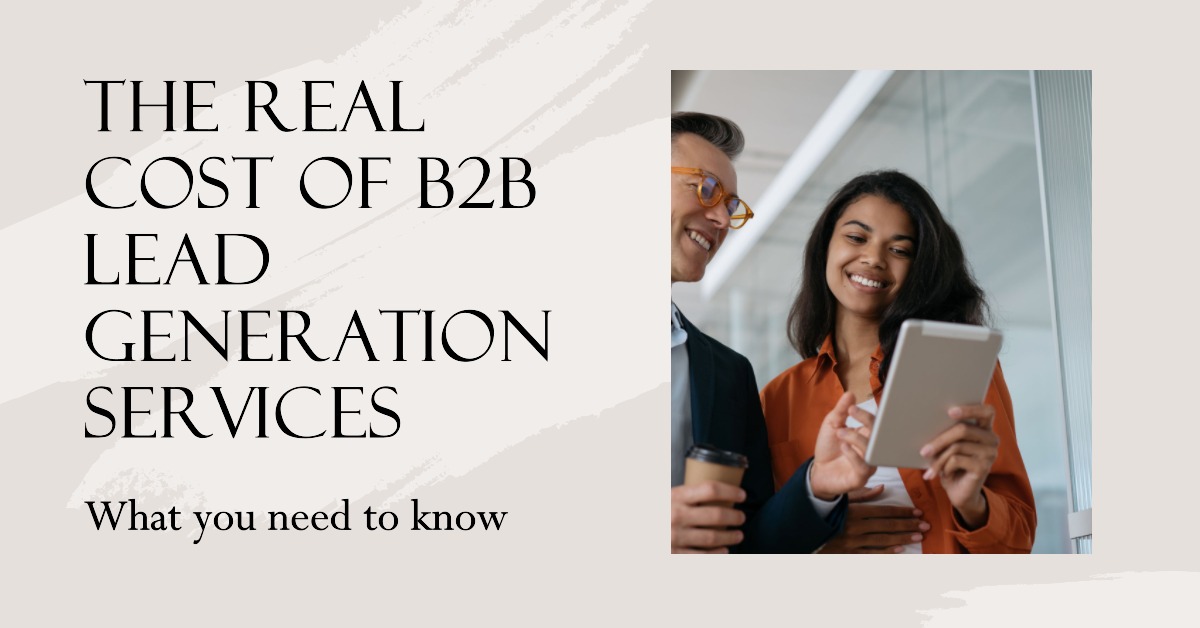
The Real Cost of Lead Generation Services
Lead generation as a service can be a game-changer for businesses, but it’s important to understand the real cost of these services. While outsourcing lead generation efforts may seem expensive at first glance, it’s crucial to consider the long-term benefits and ROI that come with hot leads. In this section, we’ll explore the various costs associated with lead generation services.
One of the main costs of leads generation services is paying for a team of experts to handle your lead gen efforts. This includes hiring individuals who specialize in demand generation, content creation, public relations, and social media management – just to name a few.
Additionally, there are costs associated with purchasing and maintaining various lead generation tools and software. These expenses can quickly add up, making it cost-prohibitive for some businesses to outsource their lead gen efforts.
Another factor that impacts the cost of sales lead generation services is the quality of leads generated. While some companies may offer cheaper pricing options for their services, they may not be able to deliver high-quality leads that convert into sales.
This ultimately leads to a lower ROI and wasted resources for your business. Lead generation efforts also require ongoing maintenance and optimization in order to ensure success.
This means regularly analyzing marketing charts and data from various lead generation channels (such as social media or email marketing) in order to determine what’s working best – and what needs improvement. Ongoing testing and optimization are essential components of any successful lead generation b2b strategy but can add additional costs if done internally.
When considering outsourcing your lead generation in b2b efforts, it’s important to carefully evaluate all associated costs – both monetary and otherwise – in order to determine if it’s worthwhile for your business. While there are certainly expenses involved in using a professional-grade lead generation service, the long-term benefits can be immeasurable when it comes to gaining new leads and boosting revenue growth.
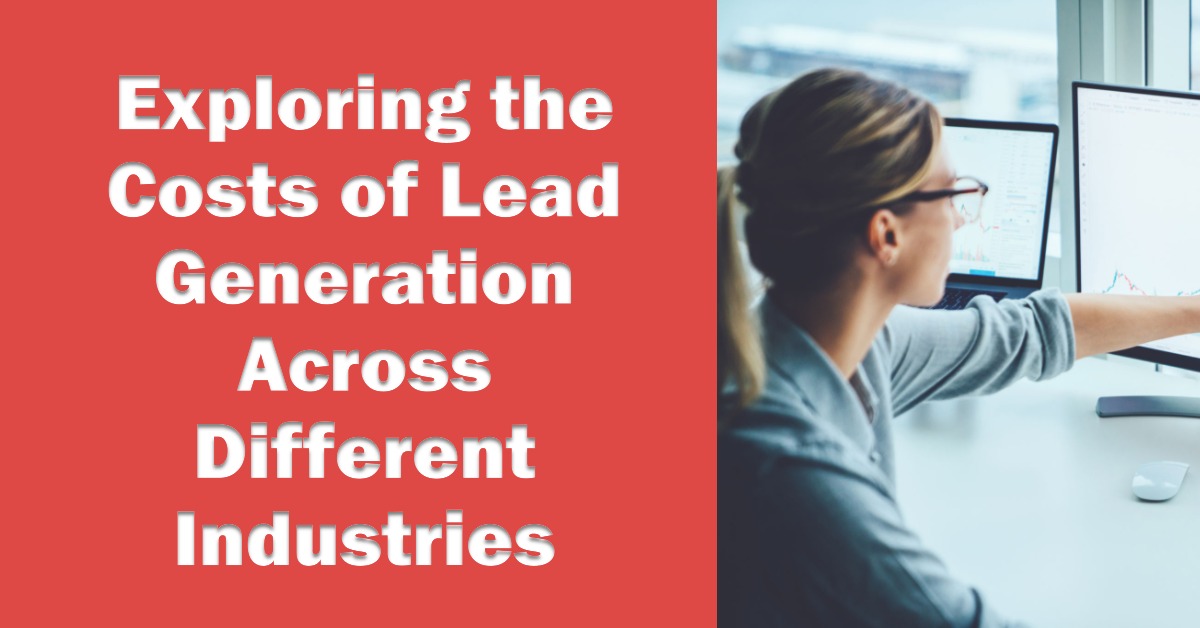
Exploring the Costs of Lead Generation Across Different Industries
One of the significant factors that can influence the cost of lead generation is the industry in which a business operates. When it comes to lead generation pricing models, there are several options to choose from.
While some industries may require more investment in lead generation than others, it is important to note that there are no fixed rules when it comes to pricing. The costs of lead generation can vary significantly based on several factors, including the type of industry, competition, and target audience.
For instance, B2B businesses in industries such as healthcare and technology that require a high level of expertise or specialization may have higher lead generation costs compared to businesses in less specialized sectors. In such industries, qualified leads usually require specific knowledge or experience that only a select few companies possess.
Therefore, generating these types of leads may require more investment in marketing campaigns or hiring a specialized lead generation company. In contrast, industries with simpler products or services such as retail and hospitality may have relatively lower lead generation costs since they do not require extensive research or vast amounts of data to identify potential customers.
Additionally, B2B businesses operating within a highly competitive space will likely need to spend more on their marketing campaigns and lead gen strategy as they aim to stand out from their competitors. Another critical factor that can influence the cost of lead generation effort across different industries is the target audience.
For instance, targeting niche markets with high purchase intent could drive up lead generation cost, since there are fewer potential clients available. On the other hand, targeting broader markets with many potential clients could generate more leads at a lower cost per qualified lead.
While there is no one-size-fits-all solution when it comes to determining how much businesses should invest in a leads generation service across different industries, understanding how your industry affects your business’s needs and requirements is crucial for developing an effective strategy. As such, conducting research into your target audience’s behavior pattern and competitor landscape helps identify key trends and variations in the cost of lead generation across different industries.
Cost per Lead: B2B Marketing Channels Breakdown
Calculating the cost per lead (CPL) is an essential step in determining the ROI of a lead generation campaign. The CPL formula involves dividing the total cost of a marketing campaign by the number of leads generated. Lead generation as a service can be a game-changer for businesses, but it’s important to understand the real cost of these services.
However, different marketing channels have varying CPLs, and it’s important for businesses to understand these costs before embarking on any lead generation strategy. One of the most popular marketing channels for lead generation is Google Ads.
Google Ads allows you to target specific keywords related to your business and display ads to potential customers who are searching for those keywords. While Google Ads can generate high-quality leads, it also tends to have a higher CPL compared to other channels due to its competitive nature.
Content marketing is another effective channel for lead generation, with lower CPLs compared to Google Ads. By creating valuable content that addresses industry pain points and challenges, businesses can attract potential customers and nurture them into qualified sales leads.
However, content creation requires significant time and effort investment from businesses. Account based marketing (ABM) is a highly targeted approach that focuses on specific accounts or companies that would make ideal customers.
While ABM generates fewer leads than other channels, it has higher conversion rates and lower CPLs since businesses are targeting high-value accounts rather than casting a wide net. ABM typically involves personalized messaging and outreach through email campaigns or social media ads.
Social media advertising can be an effective channel for generating B2B sales leads at a relatively low cost. With over 3 billion active social media users worldwide, platforms such as LinkedIn provide businesses with access to large networks of potential customers in specific industries or job titles.
Understanding the varying CPLs across different B2B marketing channels is crucial when determining a lead generation budget and ROI expectations. While some channels like Google Ads may have higher costs per lead, they also offer the potential for a high volume of qualified leads.
Other channels like content marketing or ABM may have lower CPLs but require more time and effort investment from businesses. Ultimately, businesses should evaluate their target audience and industry to determine the most effective channel for their B2B lead generation campaign.
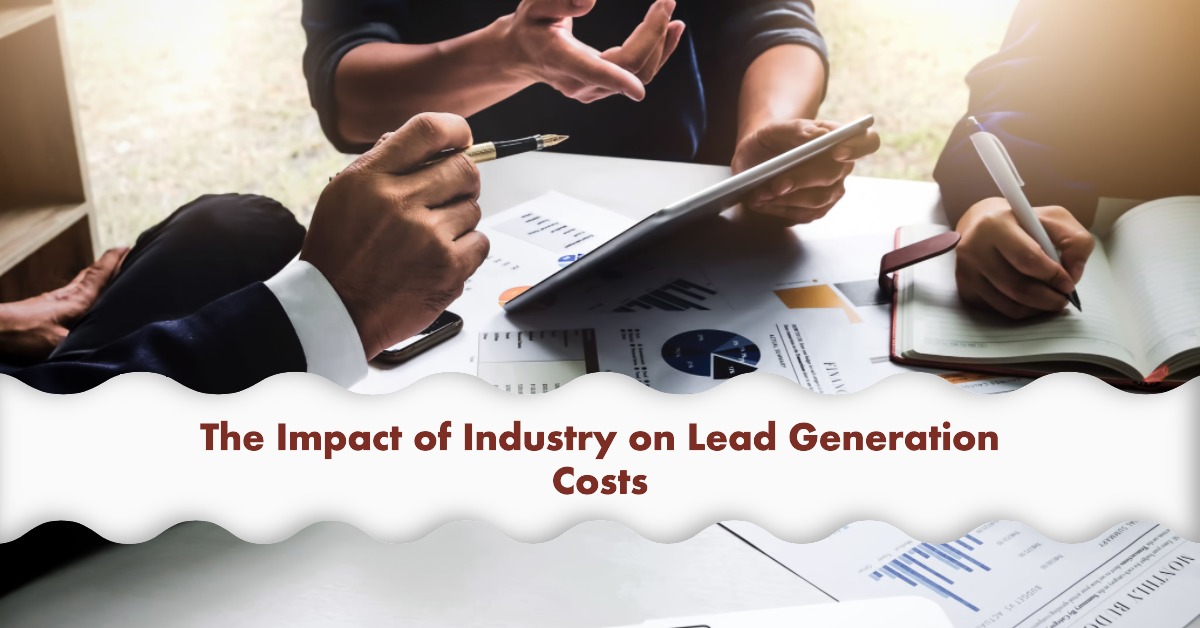
The Impact of Industry on Lead Generation Costs
The industry in which your business operates is an important factor to consider when calculating the cost of lead generation. Different industries have different sales cycles, purchase processes, customer behaviors and preferences, marketing channels, and competition levels.
All these factors can significantly influence lead generation costs and returns on investment.. For example, B2B marketers operating in highly regulated industries such as healthcare, finance, or insurance may need to invest more in lead generation compliance, data security and privacy measures.
These additional expenses can increase the overall cost of lead gen services compared to other less regulated industries. Also, the long sales cycle characteristic of these sectors may require a more extended lead nurturing process that involves multiple touchpoints across various channels such as email marketing or public relations.
Similarly, B2B marketers operating in emerging or niche industries may face unique challenges when it comes to generating qualified leads. For instance, some companies that offer complex or unfamiliar services/products such as artificial intelligence solutions or renewable energy systems may require a more customized lead generation strategy that involves account-based marketing tactics.
This approach can be more expensive than traditional outbound methods such as direct mail or cold calling. Moreover, the competition level within an industry also plays a significant role in determining lead generation costs.
If your business operates in a highly competitive market where many players are competing for the same potential customers’ attention and budget at once; you’ll probably need to invest more resources into creating compelling content offers, optimizing landing pages for conversions, and nurturing leads effectively using targeted messages across different channels such as social media and email marketing. Some industries have higher average transaction values than others; therefore regardless of whether you do inbound or outbound marketing campaigns; you are likely to spend more on generating leads for high-value opportunities since it requires extra effort from your sales team to identify potential customers who fit specific criteria.
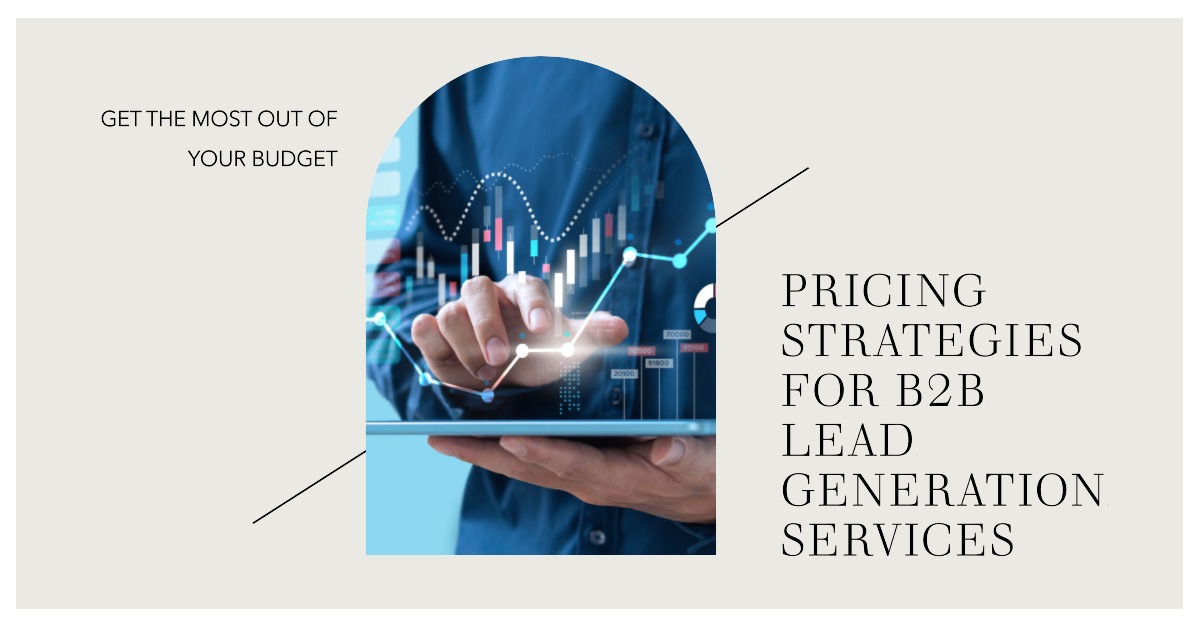
Pricing Strategies for B2B Lead Generation Services
When it comes to pricing B2B lead generation services, there are several pricing strategies that companies can use. The most common ones include flat fee pricing, pay per lead pricing, and performance-based pricing.
However, deciding which strategy to use depends on various factors such as the client’s budget, the lead generation campaign goals, the target market, and the potential customer lifetime value. Flat fee pricing is a common strategy used by many B2B lead generation agencies.
With this model, clients pay a fixed amount for the services provided regardless of the number of leads generated. This option is ideal when clients have a limited budget or need to generate a specific number of leads within a set period.
Pay per lead is another popular pricing strategy where clients only pay for each qualified lead generated through their campaign efforts. In this model, leads are evaluated based on quality and relevance before they are passed on to the client’s sales team for follow-up.
This option works well for companies that want to scale their sales operations without increasing overhead costs. Performance-based pricing is another option offered by some B2B lead generation agencies.
In this model, agencies get paid based on how well their campaigns perform in terms of generating leads that convert into actual sales opportunities. This approach motivates agencies to focus on delivering high-quality leads while ensuring that their clients achieve measurable results from their campaigns.
In addition to these three primary models of lead generation pricing strategies, there are other options such as hybrid models where multiple approaches are combined depending on specific needs or situations. For instance, a hybrid approach may incorporate flat fee pricing with pay-per-lead or performance-based fees depending on factors such as industry competition or campaign goals.
Ultimately choosing which b2b lead generation service provider to work with will depend largely upon an organization’s needs and marketing objectives as well as other factors like budget constraints and company goals. It’s important to consider all of these factors carefully when selecting a partner in order to get the most out of a b2b lead generation campaign.
Conclusion
Lead generation pricing is a crucial aspect of any business that wants to grow its customer base and increase its bottom line.
With the right lead generation tool, marketing channels, and strategies, businesses can generate quality leads at a reasonable cost. While lead generation agencies and companies offer valuable services in this area, it’s essential to understand the factors that influence lead generation costs to make informed decisions.
Marketing charts show that different industries have varying costs per lead, which means there isn’t a one-size-fits-all approach to lead generation. However, businesses can use this information as a benchmark when choosing the right marketing channels and determining how much they should charge for their services.
When it comes to lead generation pricing models, there are several options available. Cost per lead (CPL) is one of the most popular models used by b2b sales teams.
It allows businesses to pay only for the leads they receive without worrying about upfront costs. However, other models such as pay-per-click (PPC), retargeting campaigns, and social media advertising may be more suitable depending on your business needs.
The real cost of lead generation services can vary depending on your industry, target audience, marketing channels used, among other factors. Therefore it’s crucial that you work with an experienced lead generation company or agency that understands your business goals and objectives.
While generating leads can be costly for many businesses today, it’s worth investing in generating quality B2B leads by utilizing effective marketing channels and working with experienced professionals in this field. By doing so you will increase your potential customer base while keeping under control the expenses associated with your lead cost so you can better optimize profits for your enterprise in the long run.
